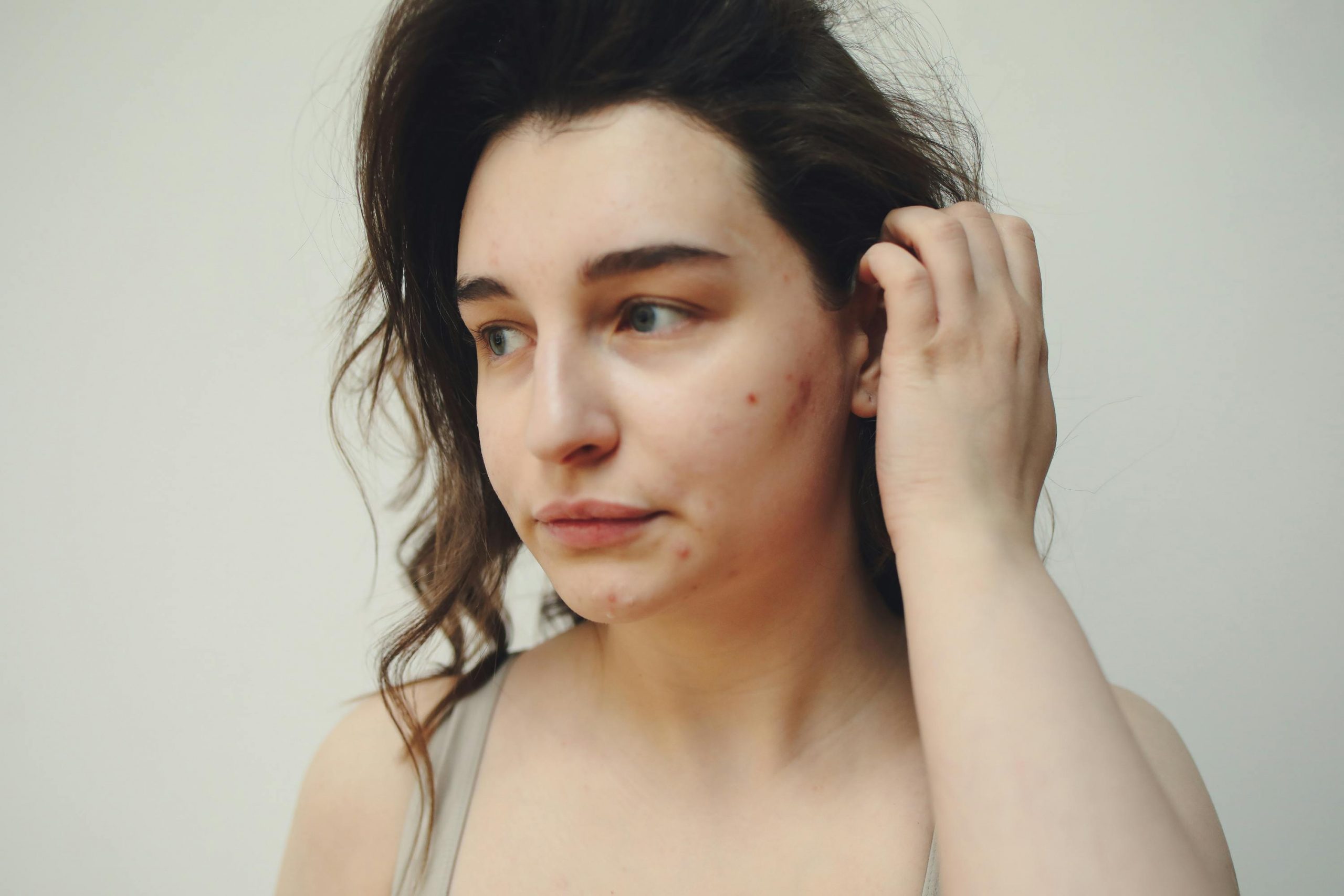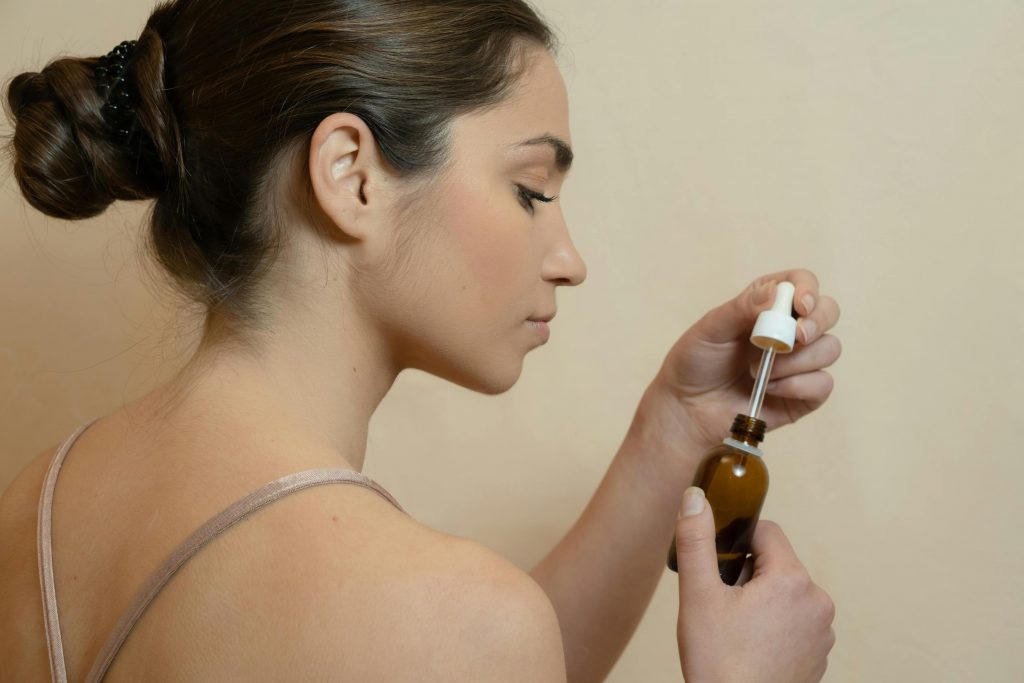If you’ve ever dabbled in skincare (and who hasn’t?), you’ve probably heard of retinol. It’s the go-to ingredient for glowing skin, fighting wrinkles, and tackling acne. But here’s a question many women ask when starting a retinol routine: Can retinol cause acne?
The short answer? Yes… and no.
Let’s dive into what retinol is, how it works, why it might cause breakouts, and how to use it without freaking out your skin.
What Exactly Is Retinol?
Retinol is a derivative of vitamin A, and it’s a type of retinoid. It’s famous for:
- Boosting collagen production
- Speeding up cell turnover
- Reducing the appearance of fine lines
- Fading hyperpigmentation
- Keeping pores clear (which means fewer breakouts)
In short, it’s like a magic potion for your skin. But magic comes with its own quirks.
So, Can Retinol Actually Cause Acne?

Here’s where things get a little confusing. Retinol itself doesn’t “cause” acne in the way we think of it. But…
It Can Trigger a “Retinol Purge”
When you first introduce retinol into your routine, you might experience a purge—a sudden wave of breakouts, whiteheads, and irritation. It’s enough to make you want to throw your retinol bottle out the window. But don’t!
This purge happens because retinol speeds up cell turnover. Basically, all the gunk lurking under your skin (think oil, dead skin cells, and bacteria) gets pushed to the surface faster than usual. This “clean-out” process can look like a breakout.
Here’s what to know:
- Purging is temporary. It usually lasts 4–6 weeks.
- It’s a sign that your skin is adjusting.
- The breakouts tend to happen in areas where you already get acne.
Or… It Could Be Irritation
Sometimes, breakouts from retinol aren’t actually a purge. They’re a reaction to irritation. Retinol can disrupt your skin barrier, leading to:
- Redness
- Flaking
- Dry patches
- Small pimples that weren’t there before
This isn’t a purge—it’s your skin crying out for help.
How Can You Tell If It’s Purging or a Reaction?
Great question! Here’s a quick cheat sheet:
| Sign | Purge | Reaction/Irritation |
| Location | Existing breakout-prone areas | New areas |
| Duration | 4–6 weeks | Ongoing until you stop |
| Severity | Mild to moderate | Severe, painful |
| Other Symptoms | None or mild flaking | Intense redness, burning, stinging |
If it’s a purge, it will pass. If it’s irritation, you may need to rethink your routine.
How to Minimize the Chances of Retinol Breakouts

No one wants to deal with breakouts, whether it’s from purging or irritation. The good news is, you can make the transition to retinol much smoother with some simple strategies.
1. Ease Into Retinol Slowly to Avoid Overwhelming Your Skin
When you first start using retinol, it’s important not to dive in too aggressively. Begin by applying it only once or twice a week. This gives your skin time to get used to the ingredient without being overwhelmed. As your skin builds tolerance, you can gradually increase how often you use it. Going too fast or using retinol daily right away can cause unnecessary irritation and breakouts. So patience is key here!
2. Choose a Low-Strength Retinol to Keep It Gentle
For beginners, a lower concentration of retinol is your best friend. Products containing between 0.1% and 0.3% retinol are usually gentle enough to reduce the risk of irritation while still providing benefits. It might be tempting to jump to higher-strength formulas thinking they’ll work faster, but stronger retinol can lead to more redness, dryness, and breakouts—especially if your skin isn’t ready for it. Look for labels that say “gentle” or “beginner-friendly” to help you pick the right product.
3. Layer on Moisturizer to Cushion Your Skin
Moisturizing both before and after applying retinol can really help reduce irritation. This method—often called the “retinol sandwich”—creates a protective barrier that cushions your skin from dryness and flakiness. If you’re unsure whether to put on retinol before or after moisturizer, this technique combines both for maximum comfort. Well-hydrated skin is more resilient and better equipped to handle retinol without discomfort. So don’t skip moisturizing—it’s a total game-changer during your skin’s adjustment period.
4. Avoid Using Harsh Acids and Scrubs When Starting Retinol
When your skin is adjusting to retinol, it’s a good idea to pause using other strong skincare actives, like AHAs (glycolic acid), BHAs (salicylic acid), vitamin C, or physical scrubs. Combining these with retinol can overwhelm your skin, leading to increased irritation, dryness, and breakouts. Once your skin is more comfortable with retinol, you can slowly introduce other active ingredients back into your routine—but only if your skin is ready.
5. Be Patient and Let Your Skin Adjust Over Time
Finally, remember that results from retinol take time. Improvements typically show up after 8 to 12 weeks of consistent use. You might also experience a purging phase during the first 4 to 6 weeks, where breakouts appear as your skin clears out trapped impurities. This can feel discouraging, but it’s a normal part of the process. Stay consistent but don’t rush to increase the strength or frequency of retinol before your skin is ready. Giving it time is one of the best ways to minimize breakouts and irritation.
Does Retinol Help with Acne in the Long Run?
Absolutely! Once your skin gets over the adjustment phase, retinol can actually help reduce acne by:
- Unclogging pores
- Reducing inflammation
- Preventing new breakouts
Many dermatologists recommend retinoids (like retinol) for adult acne because they work on multiple levels.
But What If I Already Have Sensitive Skin?
If you have sensitive skin, the idea of adding retinol might sound terrifying. Here’s what you can do:
- Choose a gentler retinoid, like retinaldehyde or adapalene.
- Use encapsulated retinol—it’s released more slowly and causes less irritation.
- Start with a pea-sized amount for your entire face.
- Use a barrier-repair moisturizer to strengthen your skin’s defenses.
When Should I See a Dermatologist?
If your breakouts:
- Are severe and painful
- Don’t improve after 6 weeks
- Seem like more than just a purge
…it might be time to consult a dermatologist. They can recommend prescription-strength retinoids, acne treatments, or help you figure out if retinol is right for you.
Key Takeaways: Can Retinol Cause Acne?
Let’s wrap this up in a neat little bow:
- Retinol doesn’t directly cause acne, but it can trigger a purge or cause irritation.
- A purge is temporary and a sign your skin is adjusting.
- Irritation breakouts need attention—don’t push through if your skin is suffering.
- Start slow, use a gentle formula, and moisturize well.
- Long-term, retinol can actually improve acne-prone skin.
Final Thoughts
Ladies, introducing retinol into your skincare routine doesn’t have to be scary! While it might seem like your skin is turning against you at first, it’s often just a phase. With the right approach and a little patience, retinol can become one of your skin’s best friends.
So next time you ask, “Can retinol cause acne?”, you’ll know the answer is a mix of “not exactly, but kind of” — and you’ll have the tools to handle it.
Ready to give retinol another chance?



